http://thestockexchangenews.com Mon, 20 Nov 2017 06:38:00 +0000 en-US hourly 1 https://wordpress.org/?v=4.9 http://thestockexchangenews.com/cattle-market-summary-fall-rally-over/ Mon, 20 Nov 2017 06:38:00 +0000

[embedded content]
]]>
http://thestockexchangenews.com/u-s-drought-monitor-as-of-november-14/ Fri, 17 Nov 2017 12:00:35 +0000
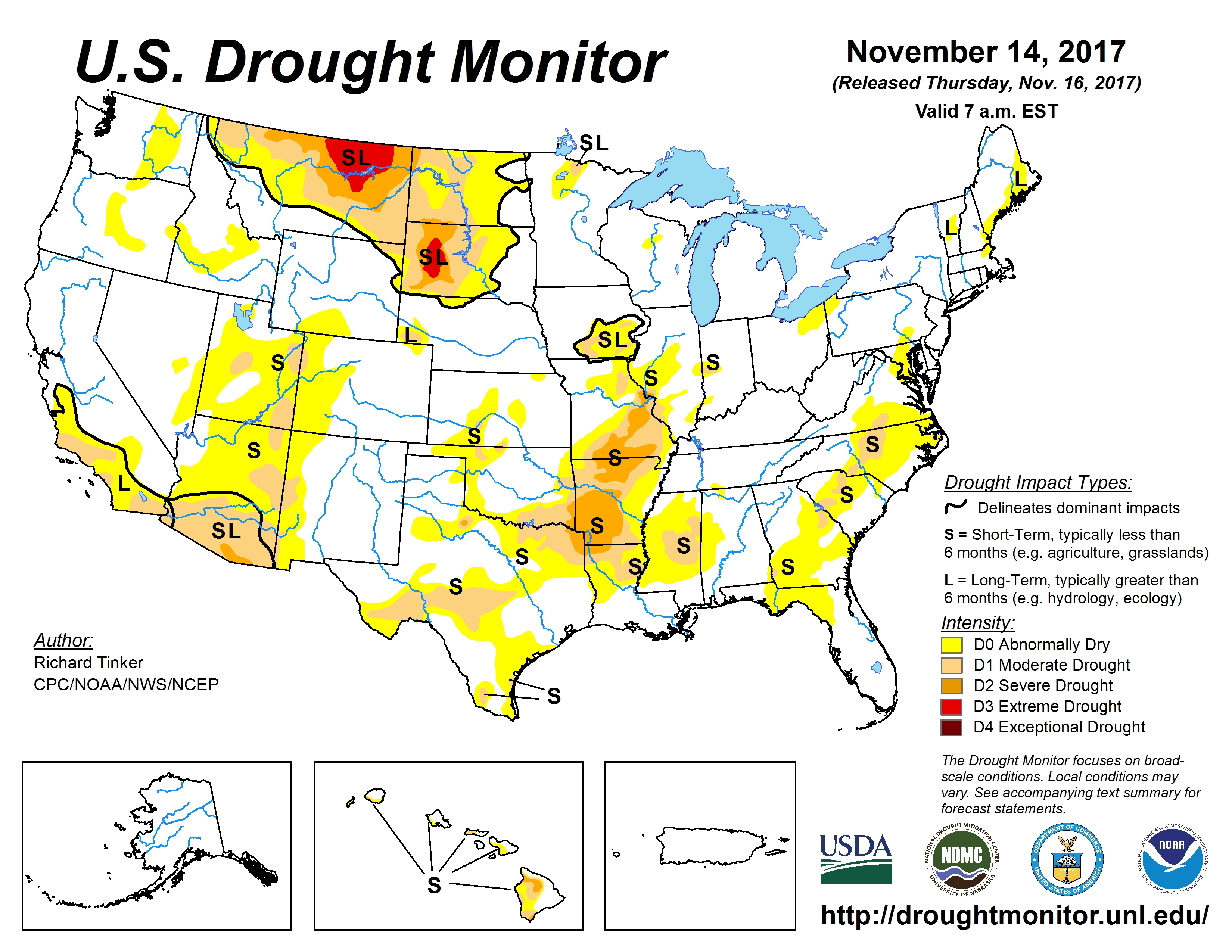
]]>
http://thestockexchangenews.com/iowa-soybean-assn-issue-statement-on-pending-label-change/ Fri, 17 Nov 2017 12:00:22 +0000
↓ Read the rest of this entry…]]>
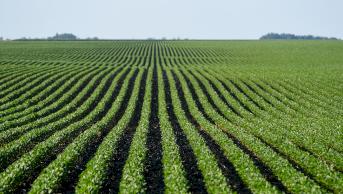 “The Iowa Soybean Association board of directors unanimously approved joining as a co-plaintiff in the legal challenge to California’s Proposition 65 and the listing of glyphosate as a carcinogen. The International Agency for Research on Cancer’s (IARC) arbitrary determination that glyphosate negatively impacts consumers and food producers sets a dangerous precedent and threatens the continued availability of other valuable food production tools.
“The Iowa Soybean Association board of directors unanimously approved joining as a co-plaintiff in the legal challenge to California’s Proposition 65 and the listing of glyphosate as a carcinogen. The International Agency for Research on Cancer’s (IARC) arbitrary determination that glyphosate negatively impacts consumers and food producers sets a dangerous precedent and threatens the continued availability of other valuable food production tools.
“The unreasonable listing by the California Office of Environmental Health Hazard Assessment of glyphosate as a carcinogen as compelled by Prop 65 violates the First Amendment of the U.S. Constitution because it compels the plaintiffs in the case to make false, misleading and highly controversial statements about their products.
“Should labeling proceed, the ripple effect could mean environmental concerns, increased production costs – to be passed along to the consumer – and a threat to the viability of the state and country’s soybean crop given intensified weed pressures. This could be a devastating blow to Iowa soybean farmers and an industry valued at more than $5 billion.
“Glyphosate is one of the safest herbicides ever developed and has been rigorously tested by the U.S. government for decades, continually passing as non-carcinogenic. The determination by IARC, a France-based, non-scientific organization, that glyphosate is ‘probably carcinogenic’ counters the conclusion of every global regulator that has examined the issue over the past 40 years.
“Not only does the scientific community disagree with IARC’s findings, the organization’s internal process for reviewing glyphosate – along with other ‘possible’ or ‘probable carcinogens’ like French fries and coffee – has also been roundly criticized.
“The Iowa Soybean Association is proud to join other plaintiffs, including the Agribusiness Association of Iowa, in defending farmers, science and a safe and abundant food supply.”
Statement courtesy of Kirk Leeds, Iowa Soybean Association CEO
Source: Iowa Soybean Association
]]>
http://thestockexchangenews.com/temperament-convenience-or-performance-trait/ Fri, 17 Nov 2017 12:00:19 +0000
↓ Read the rest of this entry…]]>
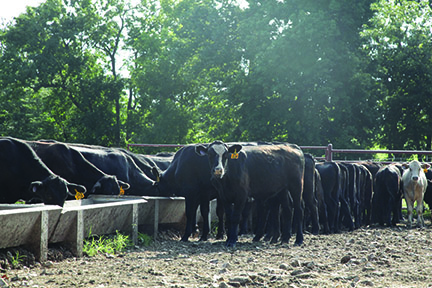 Justin Sexten, Ph.D., CAB Director, Supply Development
Justin Sexten, Ph.D., CAB Director, Supply Development
We often consider temperament a convenience trait. Looking for bulls to use, we study pedigrees, pictures, performance data and now videos until we develop a list of prospective herd sires. The final call before bidding: is he docile enough? Replacement heifer candidates will follow a similar pattern with “attitude” a deciding factor after you consider many other traits.
Even if it’s the last thing you think about at decision time, recent work at Texas A&M suggests disposition affects performance at many points in development.
Researchers sorted heifers from the same ranch into excitable and calm groups based on exit speed from the chute after processing. Like most evaluations by default, that sort produced a group of “fast” or excitable heifers. Interestingly, cattle in this experiment were fed in the same pens, so performance was comparable between these groups within the same environment.
Excitable heifers were 72 pounds lighter upon feedyard entry suggesting pre-weaning performance was reduced. That says herd operators at all stages along the production chain could realize benefits from selecting for docile cattle.
On the other hand, building on their heavier feedyard entry weights, the calm heifers gained 12% faster during the growing period. That brought with it an 8% greater feed intake, but feed efficiency still favored the calm heifers. No big surprises there, but how these groups behaved during the feeding period offers new insights.
Excitable heifers went to the bunk as often as their calm pen mates, but they were slower to approach the bunk and then spent 3 minutes less time eating. To speculate just a bit, that could be linked to a greater “flight response.” The study did not get into that aspect, but we can imagine how the excitable set would challenge the best feedyard cowboy to accurately evaluate their health status. Based on performance results, the researchers suggested the use of disposition as a sorting tool—imagine checking the wild bunch every morning.
While many of the cattle were Bos indicus-influenced, performance and behavior results were consistent across breeds. That tells us the excitable, “fast” calves of each breed represented were slower gaining and less efficient. Disposition challenges occur in every breed, yet these data suggest the bottom 15% of all operations, on the average and regardless of breed, may contain relatively “excitable” cattle. Further evaluation should quantify the threshold for “slow enough.” We all know cattle that are faster than seems ideal, but the acceptable range of exit speed or excitability within a herd or group remains undefined.
In the Texas research, performance results extended beyond the feedyard and into the beef supply chain. Calm heifers had more valuable carcasses because they weighed 24 pounds more; they also had larger ribeyes and 8 percentage points more grading Choice. Tenderness didn’t directly contribute to the $56 carcass value advantage of calm heifers, but they did yield more tender steaks across the aging groups of 1, 7 and 14 days following harvest.
These results are consistent with past studies where calm cattle perform better at the feedyard and on the rail than excitable ones. Most of the existing data were on steers, however, and this look at the heifer side makes us think about the traditionally built-in option for a pen of growing heifers. On decision day, we can keep the calm ones with better breeding and performance, but we must keep in mind that the other half probably won’t perform as well for anyone on down the supply chain. Whether you keep most, some or none of your heifers as replacements, that’s more logic to support culling beyond reproductive failure. Keep whittling off the bottom 10% to 15% of the fast ones that may be slowly eroding profitability and consumer demand for the whole beef community.
Source: Ohio Beef Cattle Leter
]]>
http://thestockexchangenews.com/feeder-flash-1117-cash-feeders-continue-to-sink/ Fri, 17 Nov 2017 05:27:44 +0000
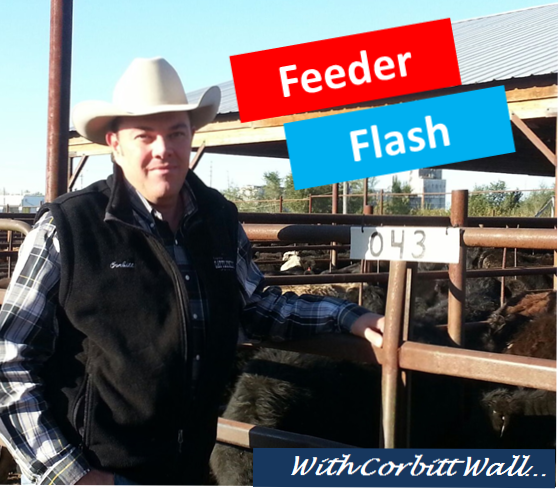
[embedded content]
]]>
http://thestockexchangenews.com/ksu-meat-scientists-verify-benefits-of-omega-3-feeding-regimen/ Thu, 16 Nov 2017 14:48:40 +0000
↓ Read the rest of this entry…]]>
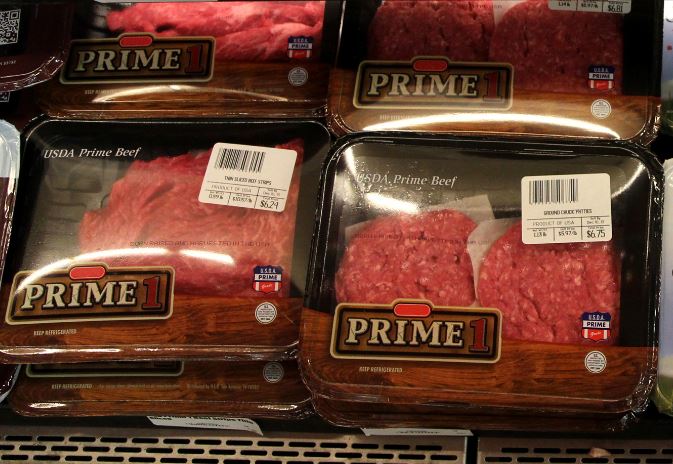 Study indicates no effect to flavor, tenderness or shelf life
Study indicates no effect to flavor, tenderness or shelf life
MANHATTAN, Kan. – Dennis Nuttelman was pretty sure that the Omega 3-enriched beef and pork he was selling from a family farm in Nebraska was not only healthy, but consumers would also think it tasted pretty good.
Now, research from Kansas State University is telling him he is right.
Meat scientists at the university are reporting results of a study that indicates that Omega 3 enriched meat maintains its flavor, tenderness and shelf life just as well as meat that is not enriched with the beneficial fatty acid.
The human body needs Omega 3 fatty acids to function, but they also have been proven to provide substantial health benefits. The U.S. National Institutes of Health reports that some of the benefits of a diet rich in Omega 3 fatty acids include a lower risk of heart disease, some cancers, age-related macular degeneration, rheumatoid arthritis and possibly even Alzheimer’s disease.
Omega 3 fatty acids have also been shown to improve a baby’s health and development when the mother’s diet includes them during pregnancy and breastfeeding.
John Gonzalez, a meat scientist at Kansas State University, said a past problem with simply adding Omega 3 fatty acids to animals’ diet is that it would cause an off-flavor or accelerate discoloration in consumer meat from that animal.
“The figure that has been thrown out in the history of meat science for the past 20 years is that $1 billion per year is lost just on meat being thrown away from being discolored,” Gonzalez said. “If you actually increase Omega 3’s and it has a negative effect, that’s a bad thing because you may be able to sell for a greater price, but you have to throw away more of your products.”
Those concerns related to feeding Omega 3 enriched diets to pigs and cows may soon go away with K-State’s recent findings.
The university tested meat from animals fed Omega 3’s in a patented process called LIPEX and developed by XFE Products of Des Moines, Iowa. The diet was fed to animals at Omega 3 Family Farms of Columbus, Nebraska, where Nuttelman is the farm director.
Gonzalez and the K-State meat scientists found that the Omega 3 content in the consumer meat product increased by 178 percent. Subsequent taste tests with trained panelists showed that there was no reported difference in the taste, color, tenderness or shelf life of the meat.
“So what we know is that the level of Omega 3’s are increased, and those consumers who care about the level of Omega 3’s in the meat will pay the premium,” Gonzalez said. “The retailer doesn’t have to worry about throwing away the product because this product will have a (reliable) shelf life.”
Nuttelman said that his business had tested meat products for more than 15 years with Midwest Labs of Omaha, Nebraska, but had not previously worked with a public university to verify the benefits of the Omega 3 products.
He added that the patented feeding process that his company uses has increased marbling in the meat, which adds flavor.
“We believe the work that K-State did for our farm and for XFE Products will bring real value to our programs,” Nuttelman said. “I believe that consumers can look for this product in order to receive very good Omega 3 levels in their diet, and for sure the taste will be great.”
Source: KSU Extension
]]>
http://thestockexchangenews.com/choosing-a-method-for-pregnancy-diagnosis/ Thu, 16 Nov 2017 14:32:38 +0000
↓ Read the rest of this entry…]]>
McKay Erickson (Master’s student with Rick Funston, Nebraska Extension Beef Cattle Reproductive Physiologist)
Previous research has shown the benefit of pregnancy diagnosis and how it adds to a producer’s bottom line. Keeping one cow over winter can cost $100-$200 in feed and supplements so removing open cows can help decrease winter feed costs. Pregnancy diagnosis is a very valuable tool in the beef industry and it is grossly underutilized. Only about 20% of producers employ some sort of a pregnancy diagnosis in their herd. Producers have options for pregnancy determination that vary in price and difficulty- transrectal palpation, transrectal ultrasound, and a blood test. All three options require a cow to be contained in a chute or alley for an examination or blood collection. Rectal palpation and ultrasound can determine pregnancy immediately while the blood test has a waiting period as the blood samples have to be shipped and processed at a lab.
IDEXX Laboratories has developed a test that utilizes the same principles as a laboratory test, but results can be acquired in 21 minutes. This still may not be practical to certain producers as it would require a holding pen or separate sort. Other blood tests are available using BioPryn (BioTracking Inc.) or DG29 (Conception Animal Reproduction Technologies). These tests can be done in labs located around the country. They can receive your shipped blood samples and have the results back to you in a 24 hour turnaround time.
The earlier a cow can be identified as pregnant or open the more beneficial it is in making a decision to keep, sell, re-breed, etc.. With experience, rectal palpation can determine pregnancy as early as 35-45 days pregnant. Ultrasonography can determine pregnancy even earlier from 25-30 days. Both of these methods can be very accurate, but the accuracy is highly correlated with the experience level of the technician. Blood tests will accurately (95-99%) determine pregnancy from as early as 28-32 days. For the blood tests to be accurate calving must have occurred at least 75 days prior so the hormones of the previous pregnancy have had time to disappear. It is important to realize that pregnancy diagnosis prior to 40-50 days bears risk of greater pregnancy loss due to the stress caused by the pregnancy diagnosis during the fragile stage of early pregnancy.
Prices can vary greatly between veterinarians and laboratories. Processed blood tests are generally $2.40-$3.75 per cow. This depends upon the volume of cows and cost of tubes/materials along with running the tests. The IDEXX tests are in that same price range depending upon how many cows you will be testing. Palpation and ultrasound will be very similar in price depending upon the hourly rate of the veterinarian and their rate of cows checked per hour. With a small number of cows expect a higher rate that can be upwards of $4 per cow, but with larger numbers of cows you can expect that rates will be less.
Consulting your veterinarian and asking questions about cost, time, and what they prefer will help you make an informed decision as to what method will be the most cost effective and accurate to determine the pregnancy status of beef females in your herd.
*Identification of names of companies in this article is not intended to imply recommendation or endorsement of these products.
Source: Ohio Beef Cattle Letter
]]>
http://thestockexchangenews.com/grazing-bites-estimating-feed-resource-inventory-vs-the-needs/ Thu, 16 Nov 2017 14:24:05 +0000
↓ Read the rest of this entry…]]>
Victor Shelton, NRCS State Agronomist/Grazing Specialist
I really don’t know what happened to the fall. It seems like it should still be September, not November, but the weather is now starting to confirm the date and the realization that winter will soon be upon us.
I often talk about taking inventory of winter feedstuff. I’m primarily measuring dry matter, e.g. hay, pasture, stockpile, crop residue, and grazable annuals still left. October rains certainly helped to green things up and provide some new growth, but that won’t last much longer and real growth is about done and dormancy of perennials is not far off. Three or four nights in a row in the 20’s is usually enough to stop and/or kill top growth and force dormancy. If the weather stays cold or at least cool, plants will remain dormant until starting to grow again in the spring. Please note; as long as that plant is still growing at all, it’s not dormant.
Back to the dry matter; how do the dry matter requirements of the ruminant animals for the winter period match up with what you have on hand? Figure an average weight per class and then multiply that number times the number of each class. Now you have a total live weight. Multiply total live weight by .03 to get an average daily intake. For example 20 cows weighting 1,100 pounds is 22,000 pounds live weight times .03 (three percent dry matter intake) equals 660 pounds of dry matter needed per day.
Compare the amount of dry matter you will need for the livestock with how much you have and absolutely allow for waste. How hay is stored and fed affects how much is actually consumed. Hay stored outside and fed free choice can easily waste up to 45 percent of the offered amount. The more waste, the more you need to have on hand. Once you know about how much dry matter you are going to need to get through the winter and an idea on how much you have available to feed, if you are a little short on forages, you can add some supplements such as corn gluten, soybean hulls, etc. into your feeding plan. In fact, you may want to add supplements anyway if hay quality is somewhat lacking, or if more energy is needed. We used 3 percent for the intake estimate which is actually a little high, but if we have a wet, cold winter, energy needs to keep warm will increase and any growing animals will also have higher needs. It’s better to overestimate than to be short. Cold, wet, and especially muddy conditions will increase energy requirements. If you are still short on feed, then you may want to purchase some hay or consider reducing numbers some.
Purchased feeds, whether hay, silage, or supplements, are all direct costs against the animal operation which increases the per-animal cost. Before you commit to any input costs, you probably need to look at alternatives or the other side of the scale. Is it more cost effective to reduce animal numbers or to buy feed where short? Are there animals that are hard keepers that will require more feed to maintain? Are there animals that have not kept up with the remaining animal production model?
Here are a few things to at least look at and consider when evaluating your herd. First would be body condition. If an animal is not able to gain efficiently on the pasture or other feeds present, especially as compared to the rest of the group and maintain itself likewise, then this animal is certainly a candidate for culling. I certainly look at temperament. Animals with a poor attitude quite often disrupt normal activities and can also sometimes be considered dangerous. Life is too short to deal with some animals. Health should be a major factor. This could be a genetic issue or an ailment that might justify culling. Animals that are just not reproducing or cycling as they should be should be considered to be culled. It is also the opportunity to improve the herd. If you cull or sell off a certain percentage of the group each year, such as five or ten percent, then the remaining are that much better, plus you are amplifying the best animals. Selecting for animals with good conformation is important. They should have good feet and legs, udders, good scrotal conformation, and good girth and appropriate frame. They should also hold appropriate characteristics for the breed, and male and female features. If the animal doesn’t fit your program or management, then consider culling it. Using these evaluation methods, will give you the opportunity to build herds back with good, sound, efficient animals that can provide you and the next generation with even better stock.
One last note on stockpiled forages. Back fencing is generally highly recommended as you graze across a field to keep the animals from continuing to go back and eat new regrowth. I usually base this on the quality of the stockpile. Older stockpile, or stockpile over 90 days old, is less likely to be overgrazed. I would certainly keep an eye on the field and if you see much grazing of regrowth or too much soil disturbance, especially if you are seeing any bare soil at all, back fence. Once forages go completely dormant, grazing will have less impact on next spring’s growth, but grazing it too short will still have a negative impact on runoff, infiltration, and the possibility of weeds the next season.
I will end this issue with a few personal thoughts about Thanksgiving. Many families have a tradition of everyone noting something that they are thankful for prior to the bountiful feast they are about to partake. Tis the season, so, I’m thankful for fall rains and the forage and crops we have, even after dry weather. I’m thankful for growing up in the era where working hard was respected and expected, when families gathered at the table for meals, and ate from the garden more than a box. When watching a black and white TV was something special for a few quality shows. When homes were rarely locked, you knew all your neighbors, and you waited until the party line was open to make a call. When life at least seemed simpler, slower, and less stressful. I wish everyone a happy Thanksgiving, perhaps bringing back some old traditions, enjoying family, friends, food, and all the blessings that we should be thankful for.
Keep on grazing!
Source: Ohio Beef Cattle Letter
]]>
http://thestockexchangenews.com/feeder-flash-1116-easy-come-easy-go/ Thu, 16 Nov 2017 05:43:30 +0000

[embedded content]
]]>
http://thestockexchangenews.com/upcoming-k-state-research-and-extension-events-3/ Wed, 15 Nov 2017 21:44:13 +0000
↓ Read the rest of this entry…]]>
Horticulture, Forestry and more events
* Nov. 15 – On-Farm Produce Safety – Colby – http://www.ksre.k-state.edu/foodsafety/produce/ or 913-307-7391
* Nov. 16 – Growing Your Agri-Business – Pittsburg – 620-429-3849 or dhelwig@ksu.edu
* Nov. 16 – Food Safety Basics for Food Entrepreneurs – Olathe – http://bit.ly/2xg1b7Z or http://www.ksre.k-state.edu/foodsafety/
* Nov. 17 – FSMA Produce Safety Rule Grower Training – Kirksville, Mo. – http://www.ksre.k-state.edu/foodsafety/produce/
* Nov. 29 – On-Farm Produce Safety – Olathe – http://www.ksre.k-state.edu/foodsafety/produce/ or 913-307-7391
* Dec. 6 – FSMA Produce Safety Rule Grower Training – Kansas City, Mo. – http://www.ksre.k-state.edu/foodsafety/produce/
* Dec. 13 – FSMA Produce Safety Rule Grower Training – Barnett, Mo. – http://www.ksre.k-state.edu/foodsafety/produce/
* Jan. 11 – FSMA Produce Safety Rule Grower Training – St. Joseph, Mo. – http://www.ksre.k-state.edu/foodsafety/produce/
* Feb. 23, 2018 – FSMA Produce Safety Rule Grower Training – Olathe – http://www.ksre.k-state.edu/foodsafety/produce/
* March 9, 2018 – FSMA Produce Safety Rule Grower Training – Wichita – http://www.ksre.k-state.edu/foodsafety/produce/
Agriculture events
* Nov. 16 – Stocker School – Salina – 785-392-2147 or anruiz@ksu.edu
* Nov. 16 – Growing Your Agri-Business – Pittsburg – 620-429-3849 or dhelwig@ksu.edu
* Nov. 16 – Deer Management on Private Lands – Stark – 620-244-2826 or cgp@ksu.edu
* Dec. 14 – Farming for the Future – Pratt – 620-672-6121 or http://www.agmanager.info/events/farming-future
* Dec. 19 – Farming for the Future – Salina – 785-392-2147 or http://www.agmanager.info/events/farming-future
* Jan. 10 – Farming for the Future – Scott City – 620-872-2930 or http://www.agmanager.info/events/farming-future
* Jan. 11 – Farming for the Future – Emporia – 620-341-3220 or http://www.agmanager.info/events/farming-future
* Jan. 11 & 12 – Farm Financial Workshop – Salina – http://www.agmanager.info/events/farm-financial-workshops or 785-532-0964
* Jan. 23 & 24 – Farm Financial Workshop – Kingman – http://www.agmanager.info/events/farm-financial-workshops or 785-532-0964
* Feb. 7 – Farm Financial Workshop – Colby – http://www.agmanager.info/events/farm-financial-workshops or 785-532-0964
* Feb. 8 – Cow/Calf School MP County – Lindsborg – 620-241-1523 or tregehr@ksu.edu
* Feb. 8 – Farm Financial Workshops – Dodge City – http://www.agmanager.info/events/farm-financial-workshops or 785-532-0964
* Feb. 12 & 13 – Farm Financial Workshops – Salina – http://www.agmanager.info/events/farm-financial-workshops or 785-532-0964
Source: KSU Extension
]]>
http://thestockexchangenews.com/angus-champions-named-at-2017-american-royal/ Wed, 15 Nov 2017 20:47:57 +0000
↓ Read the rest of this entry…]]>
Angus enthusiasts gathered for the 2017 American Royal Super Point Roll of Victory (ROV) Angus Show, October 28 in Kansas City, Mo. Kyle Perez, Nara Visa, N.M., evaluated the 156 entries, which included 125 females, 30 bulls and one cow-calf pair.
KR Casino 6243 claimed grand champion and junior champion bull honors. Krebs Ranch, Gordon, Neb., and Badger Creek Cattle Co., Emporia, Kan., own the January 2016 son of CFCC Black Jack 001.
Cade Stertzbach, Louisville, Ohio; Massie Creek Cattle, Cedarville, Ohio; and David Smith, Boulder, Colo., own the reserve grand champion bull. SCC Tradition of 24 is a May 2015 son of Wright SCC Bootlegger 0522. He first won senior champion.
EXAR Princess 6680 won grand champion female for Carter Ward, Plattsburg, Mo. The January 2016 daughter of S&R Roundtable J328 first won junior champion.
Dameron Primrose 659 claimed reserve grand champion female for Jack Dameron, Towanda, Ill. The February 2016 daughter of Dameron First Class also won reserve junior champion.
Brady Schnelten, Rockbridge, Ill., owns the grand champion cow-calf pair. Top Line Lady 5103 is an April 2015 daughter of PVF Insight 0129. A February 2017 bull calf sired by SAC Conversation is at side.
Source: American Angus Association News Release
]]>
http://thestockexchangenews.com/shorthorn-annual-meeting-updated-schedule/ Wed, 15 Nov 2017 12:00:30 +0000
↓ Read the rest of this entry…]]>
2017 Annual Meeting Forum & Awards Banquet Schedule
“Making Shorthorns Great Again”
Dec. 1 &2, 2017 | Harrah’s Hotel & Casino | Kansas City, Missouri
Friday, Dec. 1
1:30 – 1:45 | Welcome to the Annual Meeting
2:00 – 2:45 | Session Breakout One (choose one)
- Building Blocks for a Better Genetic Evaluation
- Matt Woolfolk, ASA Director of Performance Programs, shares how to build better performance data in the herd.
- Registration & DNA Technologies in the Digital Age
- Heather Lange and Rochelle Wilson, ASA staff, explains ASA registry and DNA policies.
- ASA Marketing Toolbox
- Shelby Rogers, ASA Director of Marketing & Communications, describes the opportunities ASA provides to breeders to market Shorthorn cattle.
- Discover How to Become a State Ambassador
- Emily Velisek, ASA Show/Membership Coordinator, informs state association leaders how to become an ambassador for the Shorthorn breed.
3:00 – 3:45 | Session Breakout Two (choose a different one)
- Building Blocks for a Better Genetic Evaluation
- Registration & DNA Technologies in the Digital Age
- ASA Marketing Toolbox
- Discover How to Become a State Ambassador
4:00 – 4:45 | Committee Meetings
- ASA Genetic Evaluation Committee
- ASA Commercial Acceptance Committee
- ASA ShorthornPlus/Composite Committee
- ASA Promotion Committee
5:30 – 7:00 | Evening Social with hors d’oeuvre
Saturday, Dec. 2
8:00 – 8:45 | Heterosis Importance to the Industry, Dr. Bob Weaber, Kansas State University
8:45 – 9:30 | The Value of $Indexes, Patrick Wall, Iowa State University Beef Specialist & Matt Woolfolk, ASA Director of Performance Programs
9:30 – 10:15 | The Recipe for Combining Performance & Phenotype, Dr. Mark Johnson, Oklahoma State University, Angus & Charolais breeder
10:15 – 10:30 | Break
10:30 – 11:45 | Shorthorn Strengths & Opportunities to the Commercial Cattle Industry
- Panel Moderator: Bryce Schumann, Founder of Cooperative Solutions
- Panelists: Dr. Larry Kuehn, US MARC; Douglas Olsen, Olsen Ranches; & Jeff Gooden, Valley Oaks Feeders Operations Manager
11:45 – 12:30 | Making Shorthorns Great Again, Bryce Schumann, Founder of Cooperative Solutions
12:30 – 2:00 | Lunch
2:00 – 4:00 | ASA Annual Meeting
- Association Reports
- Election of ASA Board of Directors
5:30 – 6:30 | Evening Social
6:30 – 8:30 | Awards Banquet
- Century Club Awards
- Membership Awards
- Performance Awards
- Show Awards
- Builder of Breed Awards
To register and make hotel reservations go to shorthorn.org, under quick links and Annual Meeting Registration.
Source: American Shorthorn Association News Release
]]>
http://thestockexchangenews.com/feeder-flash-1115-slippery-slope/ Wed, 15 Nov 2017 06:37:54 +0000

[embedded content]
]]>
http://thestockexchangenews.com/usda-chief-scientist-statement-on-who-guidelines-on-antibiotics/ Tue, 14 Nov 2017 12:00:51 +0000
↓ Read the rest of this entry…]]>
The World Health Organization (WHO) has released recommendations regarding the use of antibiotics in agriculture. Dr. Chavonda Jacobs-Young, USDA Acting Chief Scientist, today issued the following statement:
“The WHO guidelines are not in alignment with U.S. policy and are not supported by sound science. The recommendations erroneously conflate disease prevention with growth promotion in animals.”
“The WHO previously requested that the standards for on-farm antibiotic use in animals be updated through a transparent, consensus, science-based process of CODEX. However, before the first meeting of the CODEX was held, the WHO released these guidelines, which according to language in the guidelines are based on ‘low-quality evidence,’ and in some cases, ‘very low-quality evidence.’”
“Under current Food and Drug Administration (FDA) policy, medically important antibiotics should not be used for growth promotion in animals. In the U.S., the FDA allows for the use of antimicrobial drugs in treating, controlling, and preventing disease in food-producing animals under the professional oversight of licensed veterinarians. While the WHO guidelines acknowledge the role of veterinarians, they would also impose unnecessary and unrealistic constraints on their professional judgement.”
“USDA agrees that we need more data to assess progress on antimicrobial use and resistance, and we need to continue to develop alternative therapies for the treatment, control, and prevention of disease in animals. We remain committed to addressing antimicrobial resistance in people and animals. We will continue to work with the WHO, World Organization for Animal Health, and Food and Agriculture Organization to promote antibiotic stewardship to avoid the further emergence and spread of antibiotic resistance.”
Source: USDA News Release
]]>
http://thestockexchangenews.com/american-angus-association-elects-new-officers-board-leadership/ Tue, 14 Nov 2017 12:00:42 +0000
↓ Read the rest of this entry…]]>
The nation’s largest beef breed organization will continue to be guided by industry leaders.
The American Angus Association® announced the 2017-2018 board of directors and officers elected by state delegates during the 134th Annual Convention of Delegates in Fort Worth, Texas. Those elected to serve the Association for a second three-year term are: Jerry Connealy, Whitman, Nebraska; David Dal Porto, Oakley, California; John Grimes, Hillsboro, Ohio; James Henderson, Memphis, Texas; and Dave Nichols, Bridgewater, Iowa.
Kevin Yon, Ridge Spring, South Carolina, was elected as Association president and chairman of the board. He succeeds Charlie Boyd, May’s Lick, Kentucky. Yon and his wife, Lydia, established Yon Family Farms in 1996, and the operation is now home to 700 head of Angus brood cows and 300 commercial cows. Yon has served on the Association board for six years, was treasurer in 2016, and was vice president and vice chairman of the board this past year. He also has served as president of the South Carolina Angus Association and South Carolina Cattlemen’s Association, and as chairman of the South Carolina Farm Bureau Beef Advisory Committee, among other positions.
John Pfeiffer Jr., Mulhall, Oklahoma, was elected by the delegates to serve as Association vice president and vice chairman of the board. His family operates a diversified farming operation consisting of 2,200 acres of crops and pasture. Much of the wheat, alfalfa and corn go directly toward the 140 registered- and 75 commercial-Angus cows. Pfeiffer has served on the board for six years and was treasurer this past year. He also has been president of the Oklahoma Angus Association, a member of the first Oklahoma Ag Leadership Program, a director for the Oklahoma Cattlemen’s Association, and president of the Logan County Cattlemen’s Association.
Don Schiefelbein, Kimball, Minnesota, will serve as the 2017-2018 treasurer. He has served on the Association board of directors for five years. His family operation was started in 1955 by Frank Schiefelbein, and 62 years later with the addition of nine sons and numerous grandchildren and great-grandchildren, the operation continues to grow as fast as the family. Today, Schiefelbein Farms runs more than 1,000 registered females, farms 4,600 acres and feeds out 7,500 head of cattle.
A total of 308 delegates from 40 states and the District of Columbia represented Association members during the Annual Convention of Delegates hosted Nov. 6 during the 2017 Angus Convention.
Nearly 2,500 Angus breeders and commercial cattle producers attended the three-day event and enjoyed educational seminars, a dynamic trade show, networking and entertainment.
Board Members Elected
Elected to his second three-year term, Jerry Connealy, Whitman, Nebraska, was raised on the family ranch, which he has ran since 1981 with his wife, Sharon. The Connealys have three sons, Jed, who works on the ranch; Gabriel; and Ben; and a daughter, Hannah.
Connealy, his family and Connealy Ranch employees feel enormously indebted to the forward-thinking Angus leaders who have dedicated so much time and talent into making the Angus breed dominant in the cattle industry. Connealy feels a great responsibility to ensure that the breed continues to move forward and maintains its strength.
David Dal Porto, Oakley, California, was elected to his second term on the American Angus Association board of directors. Dal Porto and his wife, Jeanene, still manage their registered and commercial Angus operation in Oakley, Brentwood and northern California. They have three children—Lindsey, AJ and Dawson.
Dal Porto has firsthand experience at every level in the evolution of performance information and how to apply it. He complements that knowledge with a management background developed from his experiences. Dal Porto and his bull sale partner, David Medeiros, were awarded the 2011 Certified Angus Beef® (CAB) Seedstock Commitment to Excellence Award at the CAB Annual Conference.
Elected to his second term on the Association board of directors is John Grimes, Hillsboro, Ohio, a second-generation Angus breeder. Grimes was raised on his family’s Angus and commercial cow-calf operation, Maplecrest Farms, near Decatur, Ohio.
During Grimes’ youth, he was elected to the original National Junior Angus Board (NJAB). An associate professor at The Ohio State University, Grimes and his wife, Joanie, have two daughters, Lindsey and Lauren.
James Henderson, Memphis, Texas, was elected to his second term on the Association board of directors. A fourth-generation rancher, Henderson has two daughters, Hayley and Mary Katherine. He and his wife, Mary Lou Bradley, operate Bradley 3 Ranch (B3R).
Henderson has spent more than 30 years in all segments of the meatpacking and processing industry, and he and Mary Lou currently market 250 bulls per year to commercial and seedstock customers throughout the U.S.
Elected to serve a second term on the Association board of directors, Dave Nichols, Bridgewater, Iowa, has been in the cattle business his entire life, having grown up on his father’s cattle-feeding operation. Nichols Farms now has grown to 5,500 acres, 1,400 cows and a small feedlot.
The operation annually markets more than 500 bulls and a large number of commercial heifers. Nichols and his wife, Phyllis, and sister-in-law, Lillian, manage the ranch, which has a very active feeder calf-marketing program to enhance their customers’ profitability.
For more information about the American Angus Association board of directors, visit www.angus.org.
Source: American Angus Association News Release
]]>
http://thestockexchangenews.com/water-distribution-an-important-aspect-of-pasture-management/ Tue, 14 Nov 2017 12:00:09 +0000
↓ Read the rest of this entry…]]>
Clif Little, OSU Extension Guernsey County (this article appeared previously in The Ohio Farmer on-line)
A plentiful, properly located source of quality water is an important element of a pasture management system
Planned paddocks, good fencing, improved forages, grazing management, pasture fertility, and livestock genetics are all important elements when maximizing a grazing system. Water distribution, however, is arguably one of the most important elements of pasture based livestock systems. Pasture water system needs vary based on livestock species, availability of electric, soils, water supply needed, and travel distance to water. Water systems should be developed based on individual farm resources, as each farm is unique.
In Southern and Eastern Ohio, spring systems are the most often developed water sources. Springs can provide adequate, low cost, low maintenance water systems. Water quality and quantity are major considerations when developing a spring. The first question to answer concerning spring development: Is this site worth developing? If a spring is not running in July and August, it may be an intermittent spring and would have limited production. Creating enough storage capacity for a poor producing spring can be costly.
When possible attempt to develop springs at high elevations, this would allow the spring to gravity flow to lower tanks, potentially supplying water to many paddocks.
There are many water tank options, whether pressurized or gravity systems. The correct tank to use depends on the livestock species and the time of year you want to provide water.
You can find many suggestions for planning travel distance to water but in general, less distance to water equals better pasture utilization and less reserve volume needed in the tank. Often we set a goal of 600 feet or less to water and less is best.
Used, heavy, earth-moving tires are frequently used as water tanks and can be relatively inexpensive and freeze resistant. Plan the livestock rotation system identifying the areas of the farm where freeze proof systems will be needed. Winter watering systems vary in susceptibility to freeze. Many frost-free waterers use geothermal energy to keep the system from freezing and the resistance to freeze varies in each. Water systems should have the ability to be drained, with lines that can be easily shut-off.
Cost to develop a spring will vary greatly and can range from $2500-$3000 per spring or more depending on the tank selection.
If concerned about the quality of the water have it analyzed before development. The local OSU Extension office can provide laboratories capable of analyzing livestock water.
Ponds are often used as a source for livestock water where there are no springs. Livestock owners desire ponds as a watering source partially because they also have a recreational use value and can provide ample water any time of year. However, soils, drainage, and cost can limit the practicality of ponds. We have plenty of examples of poorly designed ponds which do not hold water due to limitations in soil resources and we have ponds with poor dike and overflow designs that become severely damaged in rain events. If you think a pond is what you need, contact the local Soil and Water Conservation office for advice before construction.
Ponds may be completely fenced off from livestock and piping used to deliver water. The best water in a pond is located near the center and about 2 feet below the surface. Granting livestock unlimited access to ponds and streams can cause bank erosion and water quality issues. For streams and ponds, consider developing limited water access points utilizing fencing, geotextile fabric and stone. As with springs, water quality can be an issue when utilizing ponds and streams.
Plan your water distribution systems in conjunction with paddock development so that multiple paddocks will have access to one water system. The best advice in developing your water is to visit farms which have well planned systems. When observing various farm systems pay attention to shut-off locations, tank valve systems, overflow construction, paddock utilization and ground stabilization around the tanks. Your job will be to select the best features from these working examples to implement on your farm.
For help in designing a livestock watering system contact the local USDA/NRCS Conservationist. Your USDA/NRCS office may also have cost share incentives available to farmers that can help in reducing the expense of your livestock watering system. They can also provide farm implemented examples of properly designed systems for you to view prior to construction.
There is a lot more to cover related to water systems such as construction, installation, calculating supply needs, pipe type, sizing, pumps and connections. When you set down with a professional at NRCS the best options for these easily overlooked areas will be recommended.
It is costly to build a water system twice. Take your time, do the research, keep it practical and economical, view examples and set down with the folks at NRCS and plan the system.
Source: Ohio Beef Cattle Letter
]]>
http://thestockexchangenews.com/feeder-flash-1114-headed-down-the-other-side/ Tue, 14 Nov 2017 05:44:59 +0000

[embedded content]
]]>
http://thestockexchangenews.com/ksu-swine-researchers-find-new-benefits-to-feeding-fatty-acids/ Mon, 13 Nov 2017 12:00:59 +0000



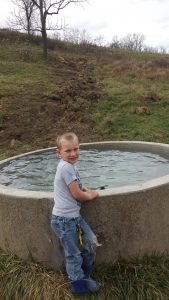
Leave A Comment